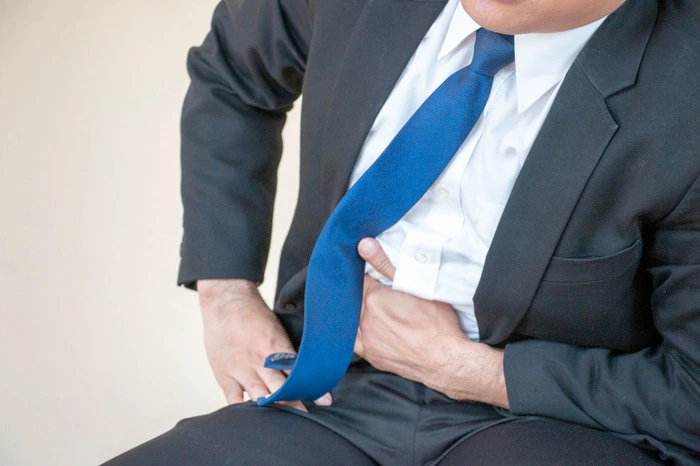Prostatitis is a disorder involving the inflammation of the prostate gland. It is a frequently painful condition that causes difficulty in urination. Also, patients experience pain in their pelvic area, groin or genitals.
Prostatitis - a frequently painful condition - involves the inflamed prostate gland, which is located just below the bladder in men and is a part of the male reproductive system. People suffering from prostatitis often experience painful or difficult urination and pain in the pelvic area, groin or genitals. If you are experiencing similar issues, then reach out to one of the best urologists in Chennai at Apollo Hospital Vanagaram.
Types of Prostatitis
In general, there are four types of prostatitis, namely:
- Acute bacterial prostatitis: It is a bacterial infection of the prostate gland usually with sudden, severe symptoms.
- Asymptomatic inflammatory prostatitis or nonbacterial prostatitis: It displays signs of an inflamed prostate gland with no symptoms.
- Chronic bacterial prostatitis: It involves ongoing or recurring bacterial infection usually with less severe symptoms.
- Chronic prostatitis [or chronic pelvic pain syndrome (CPPS)]: It features ongoing or recurring pelvic pain and displays urinary tract symptoms with no evidence of infection.
Causes of Prostatitis
It is to be noted that different types of prostatitis have different causes. Let’s delve deeper to know more.
- Potential contributors to CPPS and nonbacterial prostatitis:
- Autoimmune diseases
- Pelvic floor muscle damage
- Pelvic nerve irritation or inflammation
- Stress
- Potential causes of bacterial forms of prostatitis:
- Bladder infections
- Bladder stones
- Having a prostate biopsy
- Injury to your pelvic area
- Prostate stones
- Sexually transmitted infections (STIs)
- Using a urinary catheter
- Urinary retention or urinary blockage
- Urinary tract infections (UTIs)
Risk Factors for Prostatitis
Here are some risk factors for bacterial prostatitis:
- An abnormality in the urinary tract
- Being older than 50 years and having a condition like enlarged prostate
- Frequent UTIs or a recent bladder infection
- History of prostatitis
- Using a catheter
Signs and Symptoms of Prostatitis
The symptoms of prostatitis may vary depending on the type of disorder. However, they may include:
- Blood in the urine
- Cloudy urine
- Difficulty urinating, such as dribbling or hesitant urination
- Frequent urination, particularly at night
- Fever, chills, muscle ache and other flu-like symptoms in case of acute bacterial prostatitis
- Pain or burning sensation when urinating
- Pain in the groin, abdomen or lower back
- Pain in the area between the scrotum and rectum
- Pain or discomfort of the penis or testicles
- Painful ejaculation
- Urgent need to urinate
Diagnosis of Prostatitis
After assessing your symptoms, your doctor may order one or some of the following tests:
- Blood test: It measures PSA, a protein made by the prostate gland. Notably, high PSA levels may indicate an enlarged prostate, prostatitis or prostate cancer.
- Cystoscopy: It offers a view inside the bladder and urethra.
- Digital rectal exam: It checks the prostate gland for pain and swelling by inserting a gloved, lubricated finger into the rectum. The exam may include collecting a sample of seminal fluid by massaging the prostate gland.
- Transrectal ultrasound: It can show prostate gland abnormalities, abscesses or stones. It may be suggested to patients with acute bacterial prostatitis or chronic bacterial prostatitis whose symptoms do not improve with antibiotics.
- Urinalysis: It is conducted to check UTIs.
- Urodynamic testing: It measures nerve and muscle function, pressure in and around your bladder, and urine flow rate, amongst other things.
Management and Treatment of Prostatitis
Depending on the cause and type of prostatitis, treatment options vary.
- Nonbacterial prostatitis: It does not require treatment.
- Chronic pelvic pain syndrome: The UPOINT system is used to classify symptoms into six categories.
- Urinary: Medications are used to relax muscles around the prostate and the bladder to improve urine flow.
- Psychosocial: Counselling or medications can be used to manage stress.
- Organ: Quercetin and bee pollen supplements can be used to relieve a swollen, inflamed prostate.
- Infection: In some cases, antibiotics are used to treat CPPS.
- Neurologic: Prescription pain medicines are used to relieve neurogenic pain.
- Tenderness: Pelvic floor physical therapy may help reduce or eliminate muscle spasms.
- Bacterial types of prostatitis: Antibiotics are used for acute bacterial prostatitis. In the case of chronic bacterial prostatitis, low-dose antibiotics are prescribed to prevent recurrent infection.
Besides, your healthcare provider may suggest the following tips to manage your symptoms:
- Avoid spicy or acidic foods and caffeinated and alcoholic beverages
- Apply a heating pad to your lower back to help with pain
- Avoid activities like riding a bike that increase pain
- Drink lots of fluids
- Perform exercises like Kegels or stretching
- Sit on a doughnut-shaped pillow when in pain
- Take over-the-counter (OTC) pain relievers to help with inflammation and discomfort
- Take warm baths (sitz baths)
All in all, prostatitis is a frequently painful condition that causes difficult urination and pain in the pelvic area, groin or genitals. From counselling and medications to physical therapy, different treatment options are available to relieve symptoms. If you are experiencing similar issues, then connect with one of the best urologists in Chennai at Apollo Hospital Vanagaram.
References:
https://www.niddk.nih.gov/health-information/urologic-diseases/prostate-problems/prostatitis-inflammation-prostate
https://my.clevelandclinic.org/health/diseases/15319-prostatitis
https://www.mayoclinic.org/diseases-conditions/prostatitis/symptoms-causes/syc-20355766
